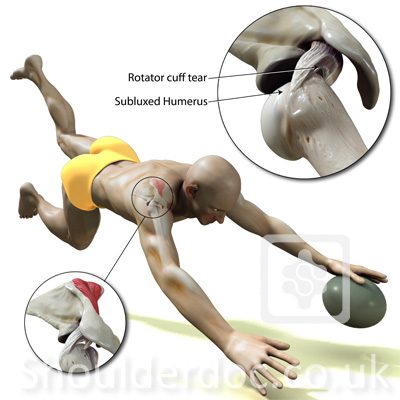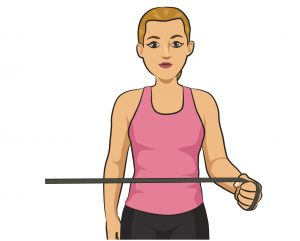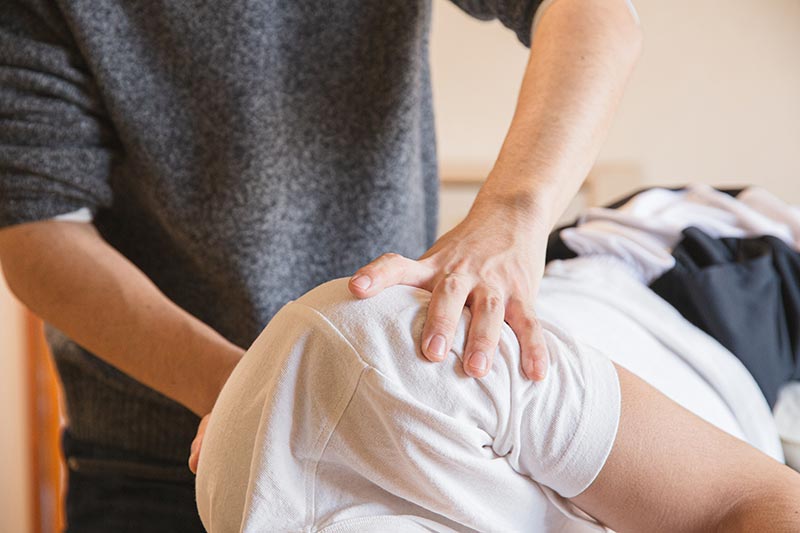Types of shoulder injuries in rugby
Some research by Juliana Usman and colleagues (1) looked at videos of rugby shoulder injuries from 2005 to 2010 in Super Rugby matches.The most common injury was to the AC Joint – and dislocations to the AC Joint resulted in the most time away from the game. To learn more about ACJ injuries click here. If you need a brace for an AC Joint injury, check our our AC Joint brace.
Usman and colleagues identified two main mechanisms of shoulder injury.
- where there was impact with the ground, when the arm was across the body and the hand was twisted down towards the hip
- impact to the lateral aspect of the shoulder with the elbow bent and the arm by the side
Collision Shoulder
The phrase ‘ collision shoulder’ was introduced by some NZ research by Mr Alex Malone and colleagues (2). These surgeons documented the damage that occurs within the shoulder in collision. The term ‘collision shoulder’ refers to a direct impact on the shoulder without a dislocation, that can result in damage to the labrum, the cartilage ring around the bone that helps to increase shoulder stability. Over 50% of the people with a shoulder injury, had been involved in a tackle. The most common mechanism of injury was with the arm out at the side with the hand twisted up to the sky (45%), direct impact (36%) arm out to the side only (8%) and load through the joint (6%). For shoulder injuries that occur with the arm out to the side, our most common brace is the anterior shoulder brace, as it allows breatheable mesh where you do not need to place the straps, resulting in a cooler, more comfortable brace.

Mechanisms of shoulder injury in rugby
Prof Lennard Funk and colleagues (3) also looked at mechanisms of shoulder injuries in rugby players. They looked at videos of 24 rugby players who sustain shoulder injuries. They identified 3 different mechanisms of injury to the shoulder
- Try-Scorer: where the moves too far overhead when players score a try
- Tackler: when the arm is extended behind the player while attempting to tackle an opponent
- Direct Impact: where there is a direct blow to the arm or shoulder when it is by the side.
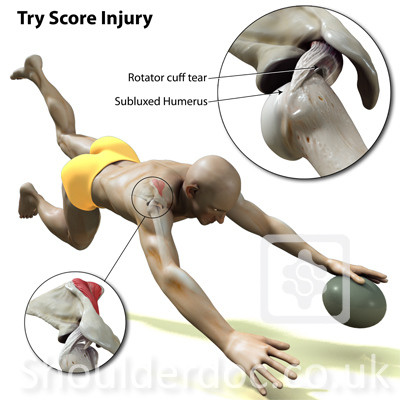

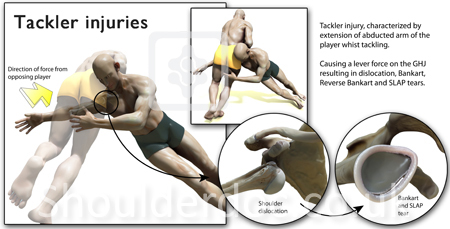
(pictures taken from https://www.shoulderdoc.co.uk/article/755 – check out the article for more details)
Their research showed that Try-Scorer and Tackler mechanisms both caused a levering of the arm on the shoulder and predominantly caused a shoulder dislocation with Bankart, reverse Bankart, and Superior Labrum Anterior – Posterior (SLAP) tears. (Click here to learn more about shoulder injuries). Try-scorer mechanism also caused the majority (83%) of rotator cuff tears. Direct hit resulted in a GHJ dislocation and labral injury in 38% of players and was most likely to cause an ACJ dislocation and/or scapula fracture.
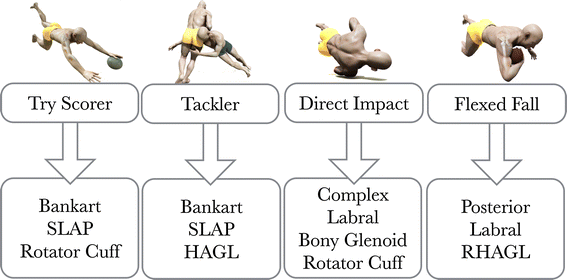
References
1: Shoulder injuries in elite rugby union football matches: Epidemiology and mechanisms. Usman, McIntosh, Quarrie, Targett. Journal of Science and Medicine in Sport 18(3), 529-533
2: SHOULDER INSTABILITY IN THE COLLISION ATHLETE –THE ‘COLLISION SHOULDER’ A.A. Malone, L. Funk, K. Mohammed and C.M. Ball
3: Mechanisms of Shoulder Injury in Elite Rugby Players. : J Crichton, D Jones, L Funk. British Journal of Sports Medicine. 2012

